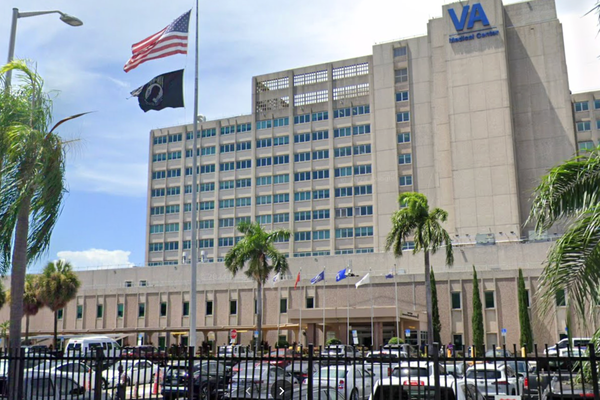Supplied: William Mora Galleries
)Cherubs, angels, dewy wide-eyed faces; birds, snakes, and fantastical animal-human hybrids — all rendered in warm colours and bold lines. Love, light, joy. These are the hallmarks of Australian artist Mirka Mora.
But underneath that beauty lies Mora's painful personal story, and a childhood that came to an abrupt end in 1942, when the French-born Jewish 14-year-old, her mother and her two sisters were sent to the Pithiviers internment camp, a temporary location before deportation to Nazi death camps.
In a 1979 interview with the ABC, Mora said: "I'm sure that my brain just got stuck at that age, because ... what I saw was too terrible."
Mora's family managed to escape from the camp and, after the Holocaust, the artist would go on to collect, paint and make comfort objects including dolls and teddy bears.
Supplied: Jewish Museum
)These artefacts and artworks are on display in Mirka, an exhibition at Melbourne's Jewish Museum, which tells her life story from her childhood and surviving the Holocaust, to immigrating to Australia in the 50s, up to her prolific final years (Mora passed away in 2018, age 90).
"Her story is exactly what we read in history books; she lived it, she breathed it, she was there, she was a witness," says exhibition curator Eleni Papavasileiou.
"We would love people to leave the exhibition with a feeling of Mirka as an incredible survivor, a storyteller, a creator, and a maker of magic."
The small exhibition space packs in over 200 pieces, from her more well-known artworks to pieces, photographs and diaries that have never been exhibited before.
'Paint hope, joy and resilience'
Stepping into the exhibition space, you are greeted by a work that is pure Mirka: a 1966 mural from the Tolarno Hotel.
"We're trying to draw the visitor's eye to how the iconography here relates to her childhood and her Holocaust experience," says the curator.
In the next room you meet Mora, age two, in a photograph from 1930. With her big brown eyes and beanie, she almost looks lifted from the Tolarno mural.
Supplied: Jewish Museum
)Mora's other influences start emerging in this part of the exhibition too, from the Romanian folklore and Parisian Jewish life that she was exposed to through her family, to the Catholic influence of her neighbour Paulette, a journalist who Mora described as her "second mother".
After Mora's father managed to free his family from Pithiviers, they spent the remainder of the war hiding in the French countryside.
In a Jewish Holocaust Centre testimonial from the exhibition, Mora remembers those they left behind at the camp who were killed at Auschwitz:
"Oh, I still remember the people behind the fence, all the dead, you have to. Yes, the truth you have to remember. You have to speak for the dead, don't you? You have to and I'm a witness and I'm a lucky escape."
William Mora told ABC Melbourne that his mother's "way of dealing with ber Holocaust experiences ... was to paint hope, joy and resilience".
While that's clear across the exhibition, what's also on display is Mora's determination to understand and engage with the darkness of what she'd survived.
The faces of those left behind appear in the 1982 work Panel of Faces, but Papavasileiou says these faces can also be found — in different shapes and forms or haunting the background — in other Mora works.
ABC Arts: Hannah Reich
)"That is actually something that a lot of the Jewish community members that come to the museum will relate to; here's this prolific artist, this happy, joyous woman that has this past that is constantly with her."
At her core, Mora used painting to explore her subconscious, says Papavasileiou.
"She must have dug pretty deep and in a pretty painful way to allow these images to surface and to take shape on canvas."
'Theatre and vivacity'
Mora expressed herself through writing, poetry, and drawing from a young age, but after the war she started developing as an artist.
Her first painting, from 1948, is included in the exhibition: a landscape showing Menthon-St Bernard in south eastern France, where Mirka and Georges honeymooned.
In 1951, fearing another war, the Mora family (which now included baby Philippe) relocated to Melbourne.
After a stint in the suburbs, they moved to 9 Collins Street in Melbourne's CBD, a building of studios that artists including Tom Roberts, Arthur Streeton and Percival Ball had worked out of.
Supplied: Jewish Museum
)Here the Moras connected with other emigre families as well as artists and art patrons, including John and Sunday Reed (later the founding patrons of Heide Museum of Modern Art), Charles and Barbara Blackman, John Perceval, Arthur Boyd and Joy Hester.
"They became quite popular ... They were both extremely charismatic and social people," says Papavasileiou.
"The studio at 9 Collins Street was an open studio; people would come for breakfast, they were entertained ... Mirka gave a sense of theatre and vivacity to the scene."
In 1954, the Moras turned their social hub into a business: Mirka Cafe. Cafe Balzac and the Tolarno Hotel followed.
Facebook: Tolarno Eating House & Bar
)They brought a Bohemian style of hospitality and art to Melbourne, attracting avant-garde artists, politicians and celebrities, including Bob Dylan and Mick Jagger.
Mirka was the energetic centre of this world, a woman who would smash her face into a birthday cake then demand that family, friends, and strangers eat it off the floor, the table and her face.
Her son Philippe told ABC Melbourne: "Beyond mum's art was her ability to put people together."
Experimentation and the Mirka iconography
The Moras' unconventional, affair-filled marriage ended in 1970.
Papavasileiou says Mirka's life "opens up" at this point: "there's a little more opportunity and options".
"Mirka establishes herself as an artist, she is celebrated, known; she becomes famous."
Supplied: Jewish Museum of Australia
)By the 80s, she had started making ceramics, soft-sculptures, intricate embroideries, theatre costumes and sets — and her artwork started growing in scale.
Every surface was an opportunity, from kitchen utensils and trams (In 1978, she became the first artist to design a Melbourne 'art tram') to the St Kilda Pier and Flinders Street Station.
ABC: Alice Walker
)"The thing that Mirka always did ... is that she experimented," says Papavasileiou.
There are many works in the exhibition that reveal how the artist explored other styles, including realism and abstractionism.
"[But] the closer she comes to getting to know herself and becoming more confident as an artist ... the closer she gets to this more recognisable iconography."
Alongside ethereal faces and angels, the Mirka Mora iconography includes animals (particularly birds and serpents) and anthropomorphic creatures.
"She just loved everything that was living and moving ... [and] love, sex and sexuality is obvious throughout Mirka's work — you always have creatures intertwined with each other," says Papavasileiou.
Supplied: William Mora Galleries
)While Mora resisted analysing her work, she told Margaret Throsby on ABC Classic in 1996 that her symbols were her "vocabulary".
"The fawn is really almost my self portrait because I think we are half-human, half-animal. So when I draw the fawn, I feel very secure and happy; I have the animal and the human being in one."
'I haven't lost my innocence'
In Mora's later years she gained a new following as an Agony Aunt on ABC TV, and in 2016 she collaborated with Melbourne fashion label Gorman.
Supplied: Jewish Museum
)Her son and gallerist William Mora says: "In a strange way, now that her personality isn't interfering with the work, her work takes on a new gravitas, a new profundity."
He says his mother's work rarely appears on the secondary market.
"People buy a Mirka work and it becomes generational, people give it to their children and their grandchildren — I think that's really a special thing for an artist's work to be so tightly held like that."
Supplied: Jewish Museum/Sarah Walker
)Papavasileiou has a few theories about Mora's wide appeal.
"From the beginning ... to the very end she was true to herself," she says.
At times, critics had dismissed Mora's art as naive.
Speaking to ABC Classic in 1996, she said: "All the critics are wrong, always ... I always say that I'm innocent. I go back to innocence because I haven't lost my innocence. I've lost once or twice, but it came back."
Papavasileiou says: "I think we're trying our best to bring her work to the fore ... [with] the attention and seriousness that it deserves. Mirka painted from the heart, but she was not naive."
The museum started planning the exhibition before COVID-19.
"We had really no sense of how relevant her story would be a year later in really instilling to people that strong message about optimism and resilience," says the curator.
As Mora herself said in her Jewish Holocaust Centre testimonial: "I'm still an optimist, I still think there will be a beautiful world one day ... Be kind and not forget. Don't forget what happened. And much love to the future."
Mirka is on at the Jewish Museum of Australia until December 19.







